Mount Lassen, California
Steven Dutch, Professor Emeritus, Natural and Applied Sciences, University of Wisconsin - Green Bay
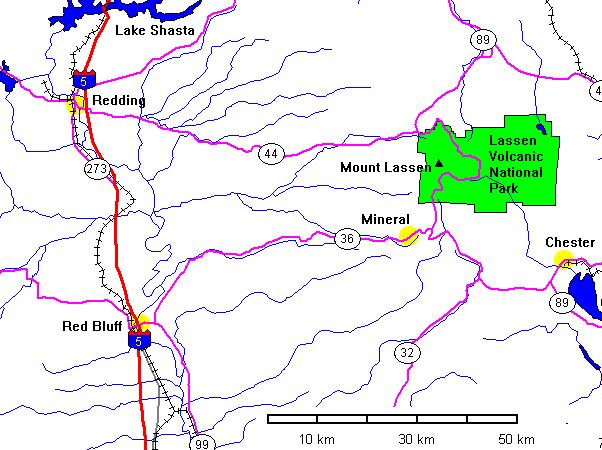
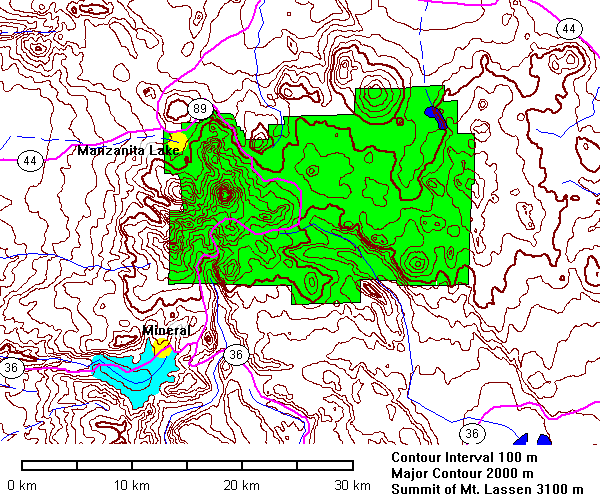
The light blue area southwest of Mineral is a former caldera.
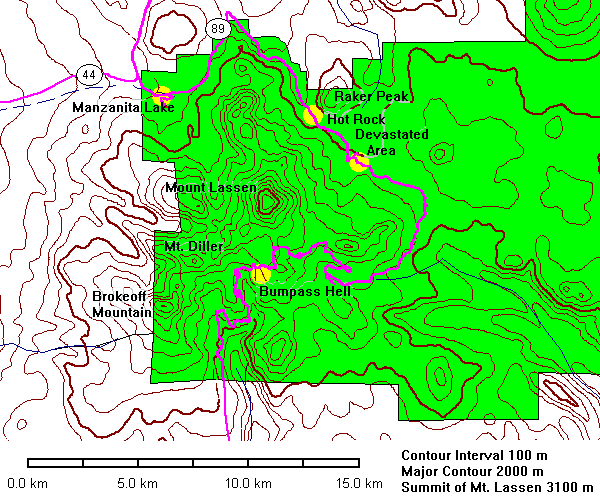
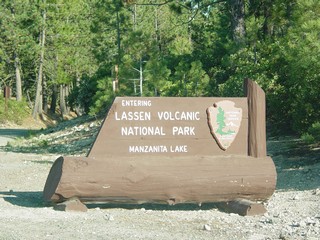 |
Until Mount Saint Helens in 1980, Mount Lassen in California was the most recently active volcano in the United States. It violently erupted in 1914-15 and sporadically until 1917. |
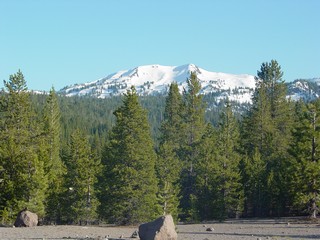 |
Left and below: views on the road south from Manzanita Lake. |
 |
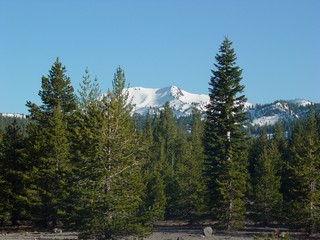 |
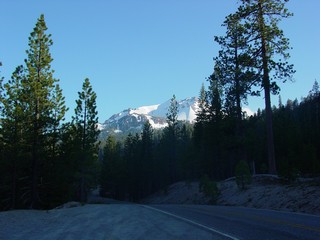 |
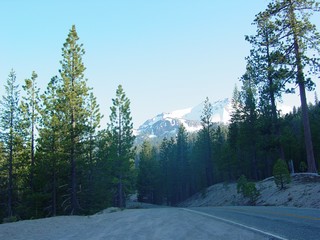 |
Bumpass Hell
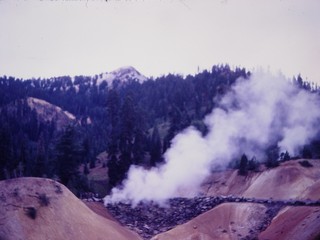 |
A miner nicknamed for an unusual anatomical quirk reputedly discovered this geothermal area on the east flank of Mount Lassen. |
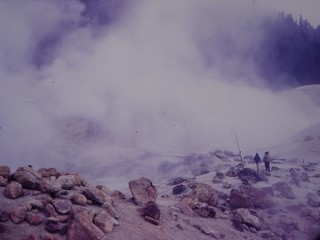 |
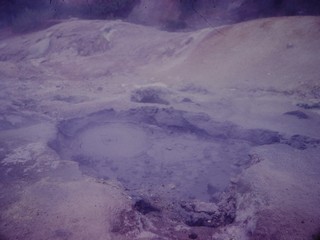 |
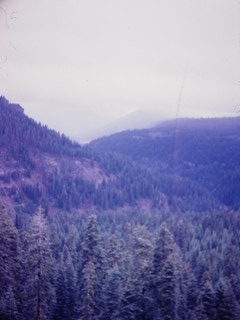 |
Left: view to the east.
Below: fish stocked in one pond fed by hot springs grow fat and lazy. |
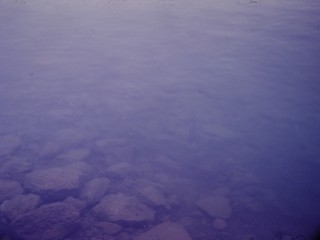 |
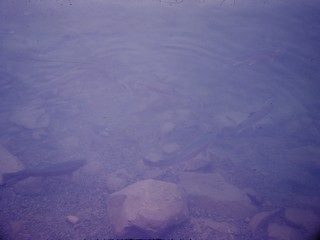 |
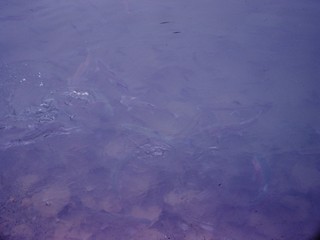 |
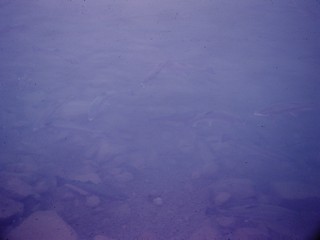 |
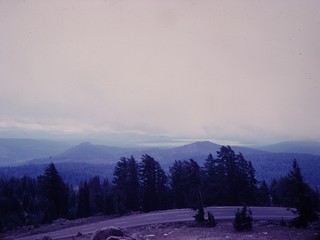 |
|
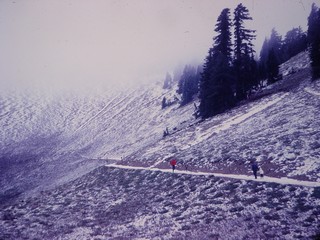 |
Snow in August on the summit trail. |
Along Highway 44
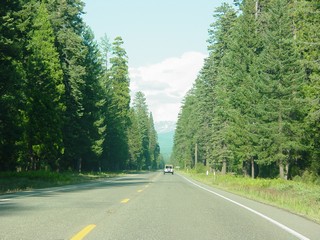 |
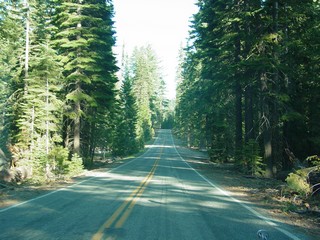 |
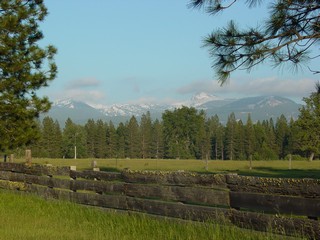 |
Mount Lassen is hardly visible from the approach on highway 44 except for some ranch clearings a few miles west of the park entrance. |
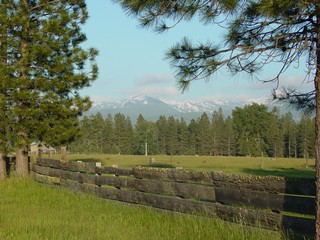 |
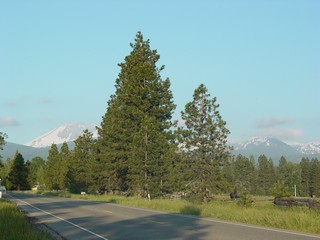 |
The Devastated Area
The largest eruption in 1915 set a surge down the northeast side of the volcano, much smaller than Mount St. Helens but just as effective in obliterating everything in its path. The photo below at left shows the area in August, 1968. Note the new snow on the summit. At right is the same scene in June 2003 from almost exactly the same vantage point. Note that there is a lot of snow still here in June. Note also that the area is mostly revegetated.
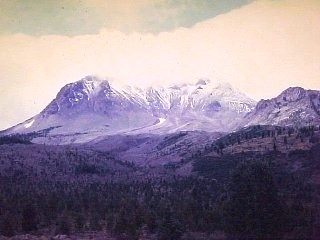 |
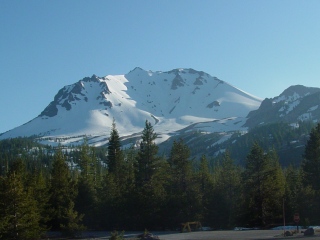 |
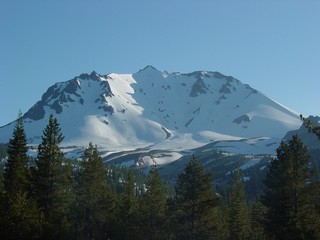 |
Left and below are additional views of Mount Lassen from the (formerly) Devastated Area |
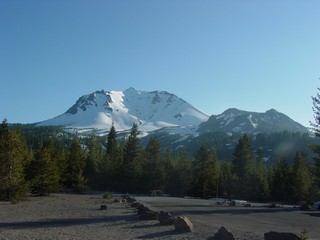 |
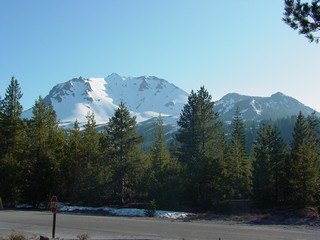 |
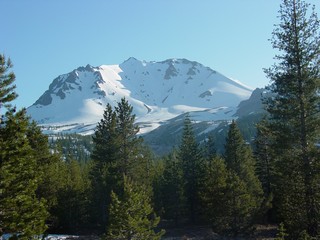 |
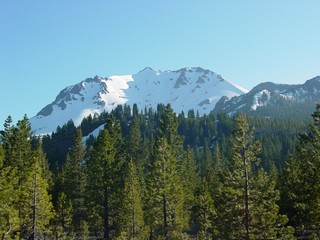 |
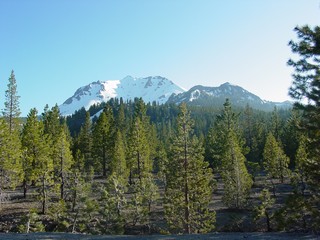 |
Note that although the area is revegetating nicely, the trees are uniform in age and size. |
The Hot Rock
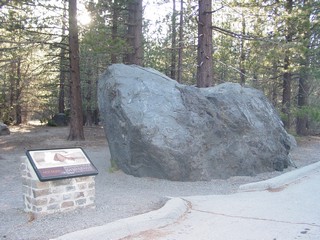 |
The 1914-15 eruptions of Mount Lassen produced little new magma. What little there was mostly remained in the vent. One exception was this large boulder. |
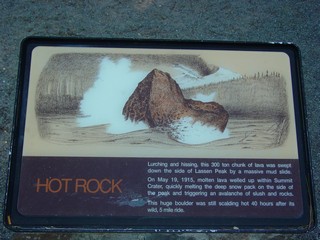 |
"Lurching and hissing, this 300 ton chunk of lava was swept
down the side of Mount Lassen by a massive mudslide.
On May 19, 1915, molten lava welled up within Summit Crater, quickly melting the deep snow pack on the side of the peak and triggering an avalanche of slush and rocks. This huge boulder was still scalding hot 40 hours after its wild, 5 mile ride." |
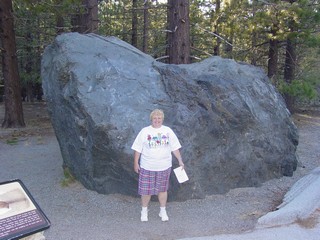 |
|
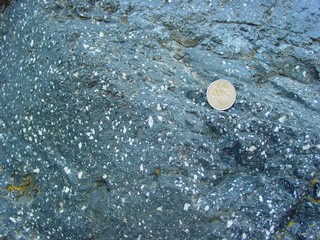 |
Close up of the porphyritic dacite of the boulder. |
Chaos Jumbles
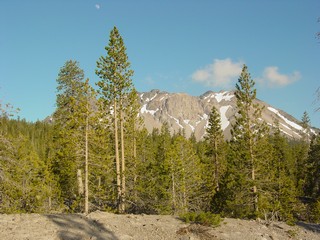 |
Chaos Crags, in the background, are a series of lava domes. The outer crust spalled off and spilled outward as landslides, covering much of the adjacent area with boulder fields. |
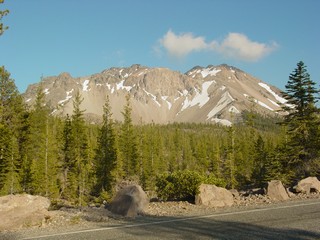 |
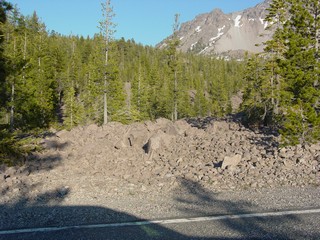 |
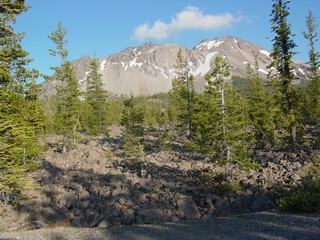 |
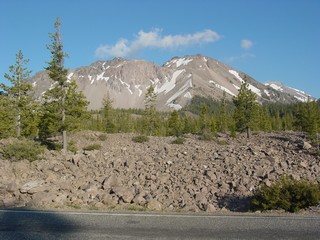 |
Manzanita Lake
This is the viewpoint for Mount Lassen.
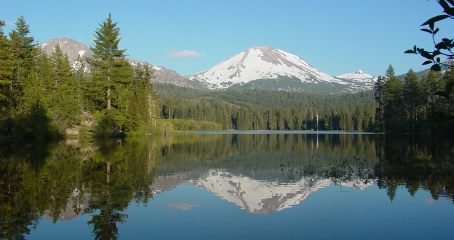
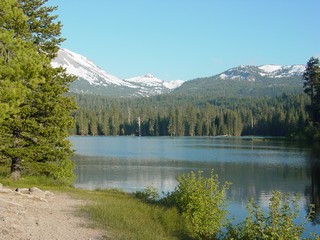 |
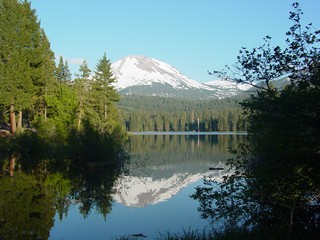 |
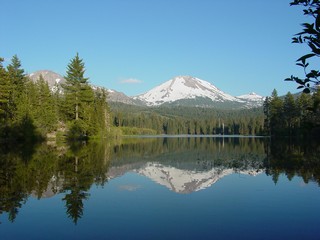 |
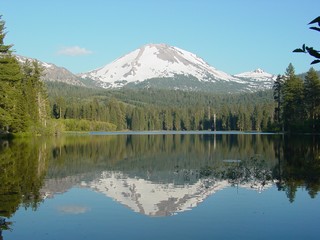 |
Distant View
| A late afternoon view from the south, showing that Mount Lassen is built on the base of a former much larger volcano. Ancestral Mount Tehama probably rivaled Shasta or Rainier in size. |
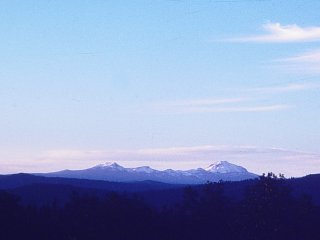 |
Return to Historic Sites Index
Return to Virtual FieldTrips Index
Return to Professor Dutch's Home Page
Created 30 July 2003, Last Update 07 June 2020